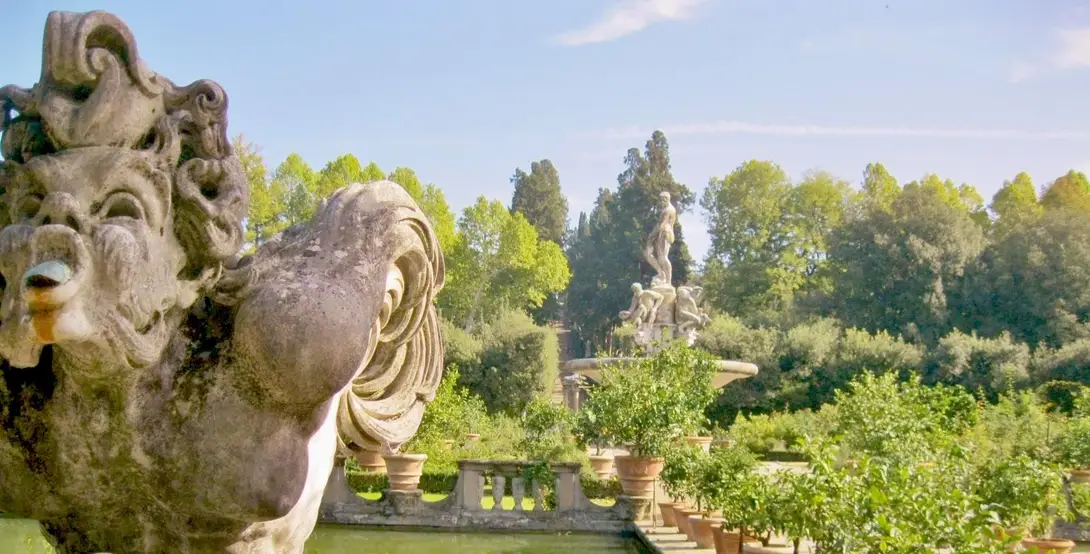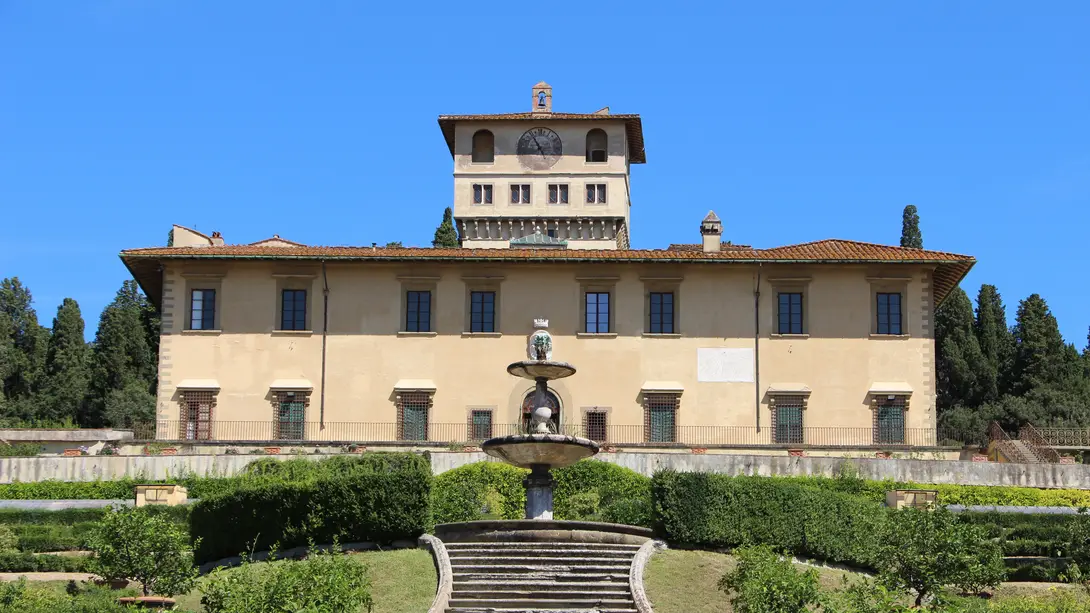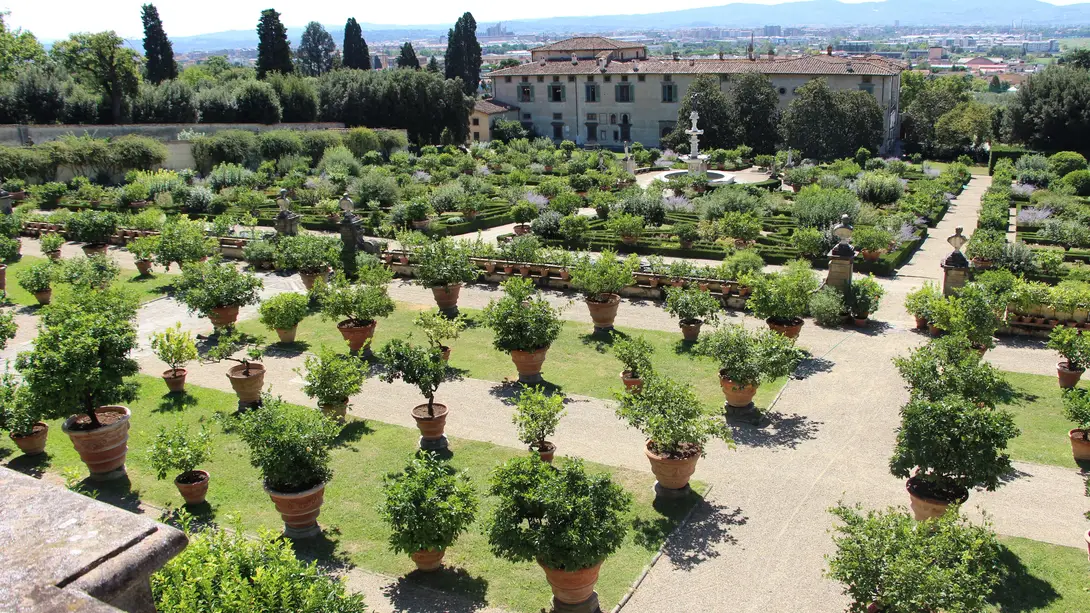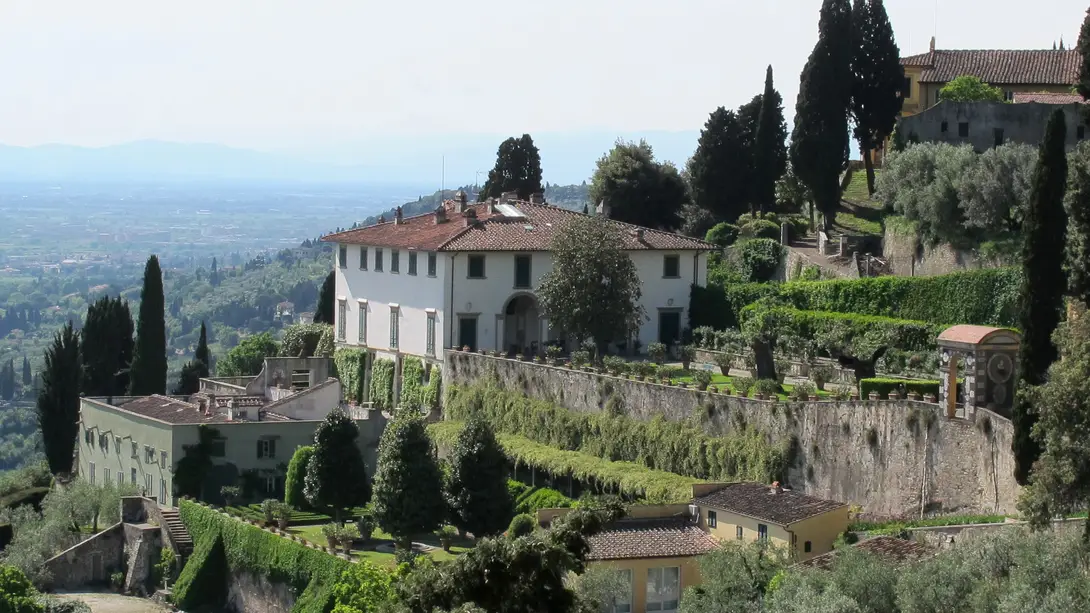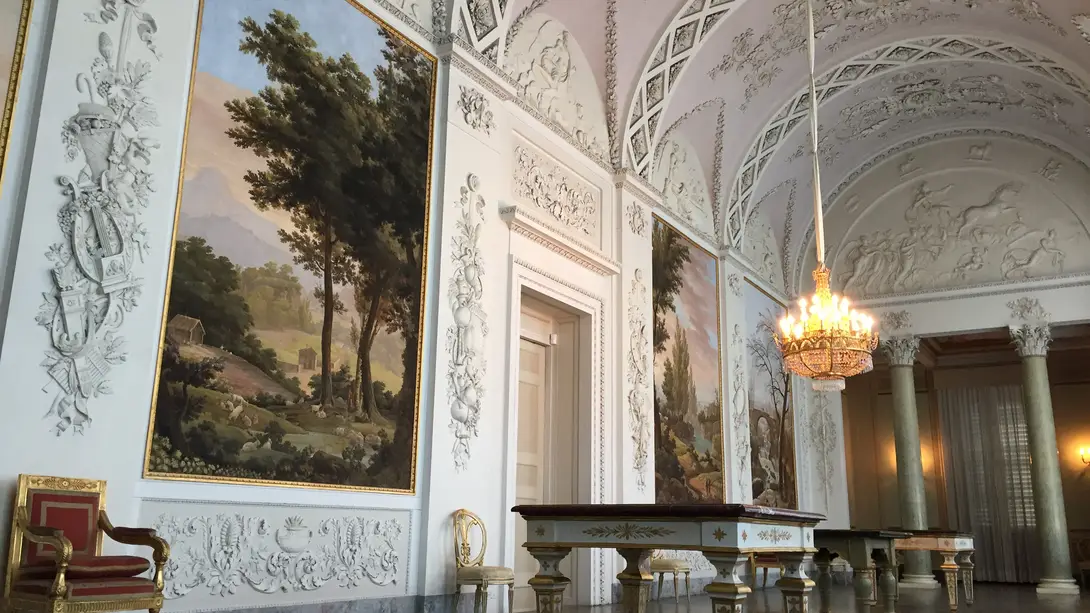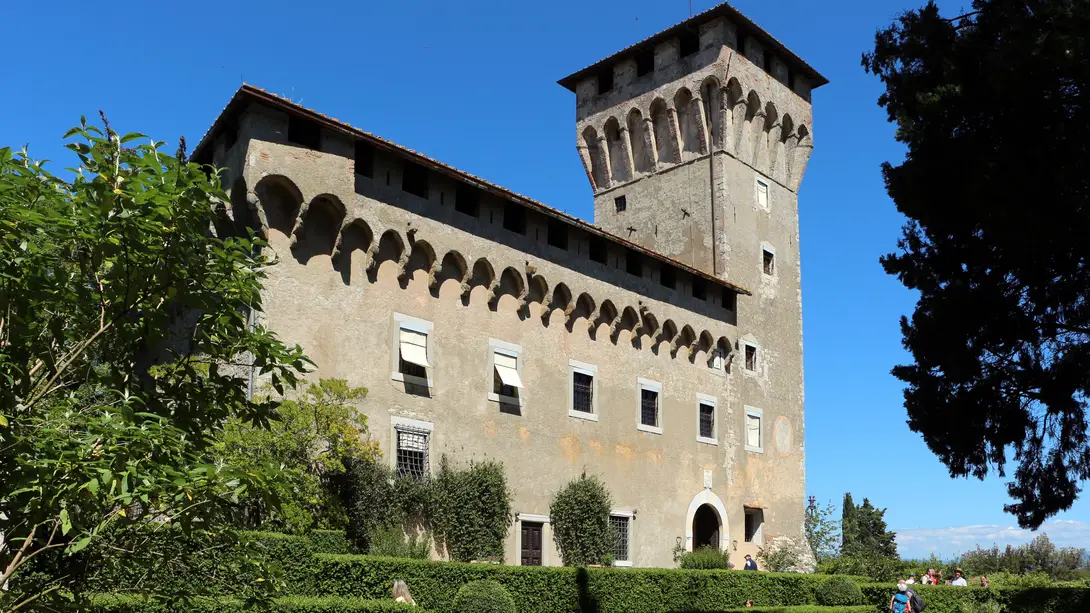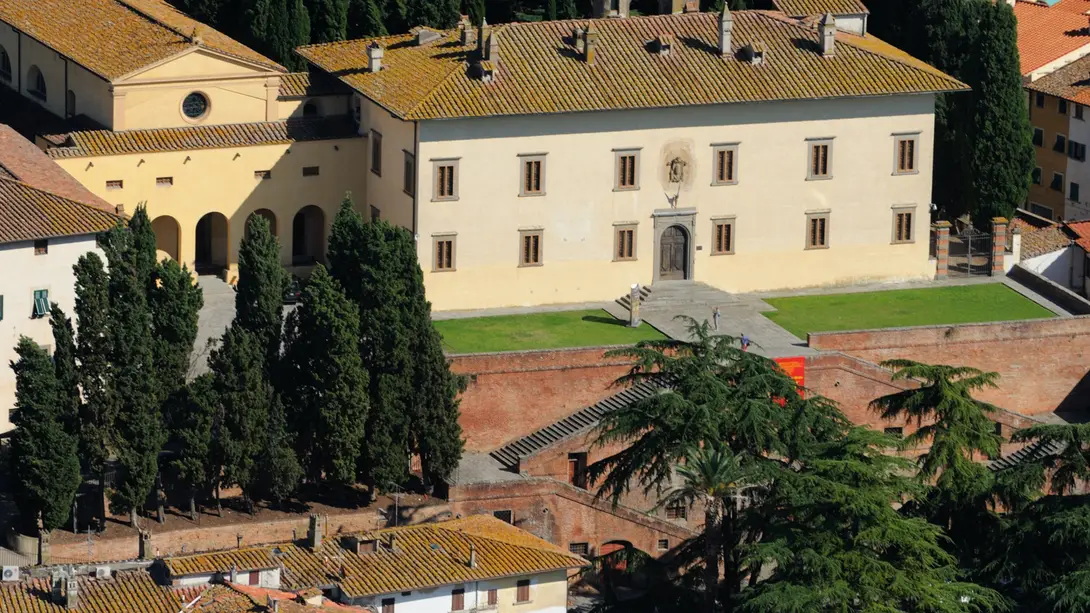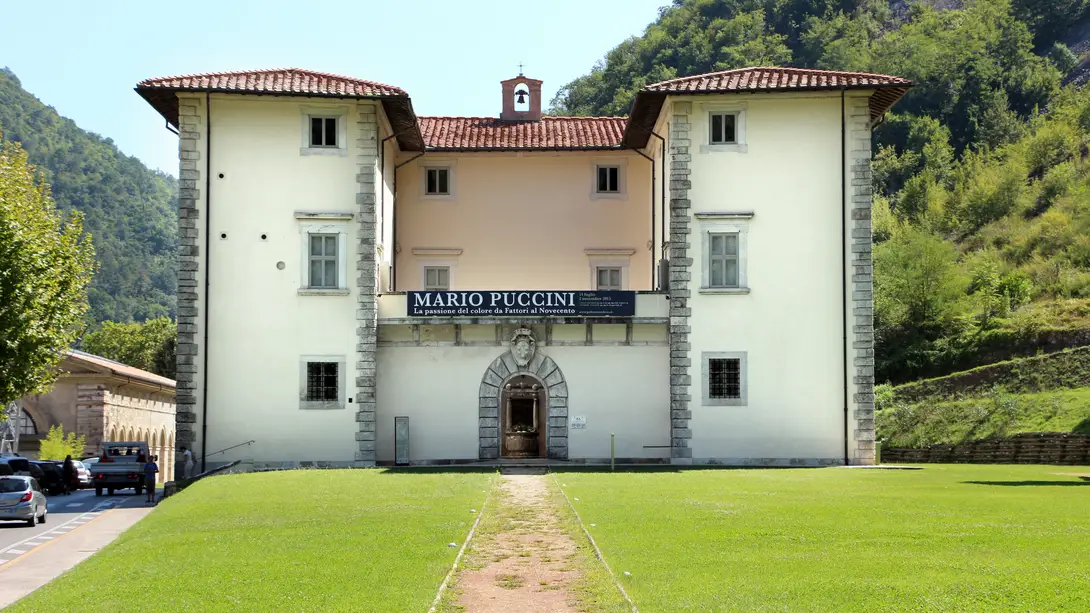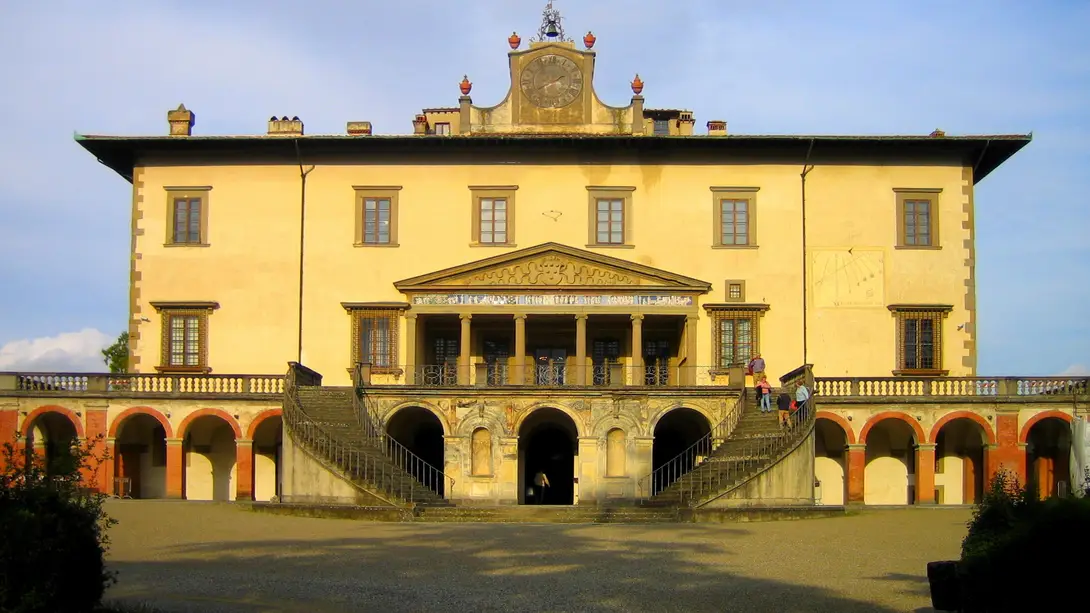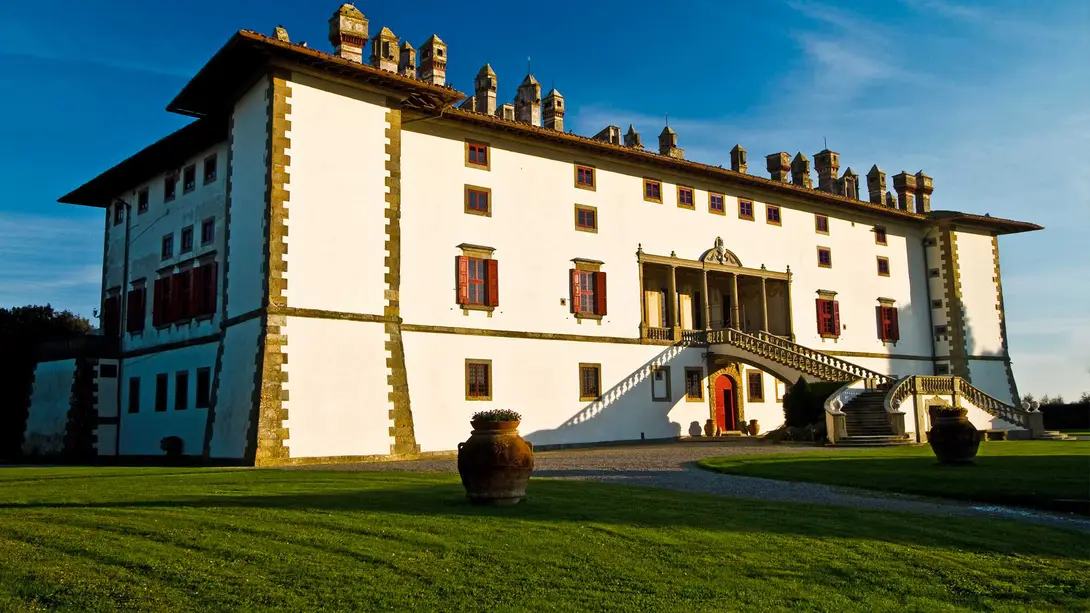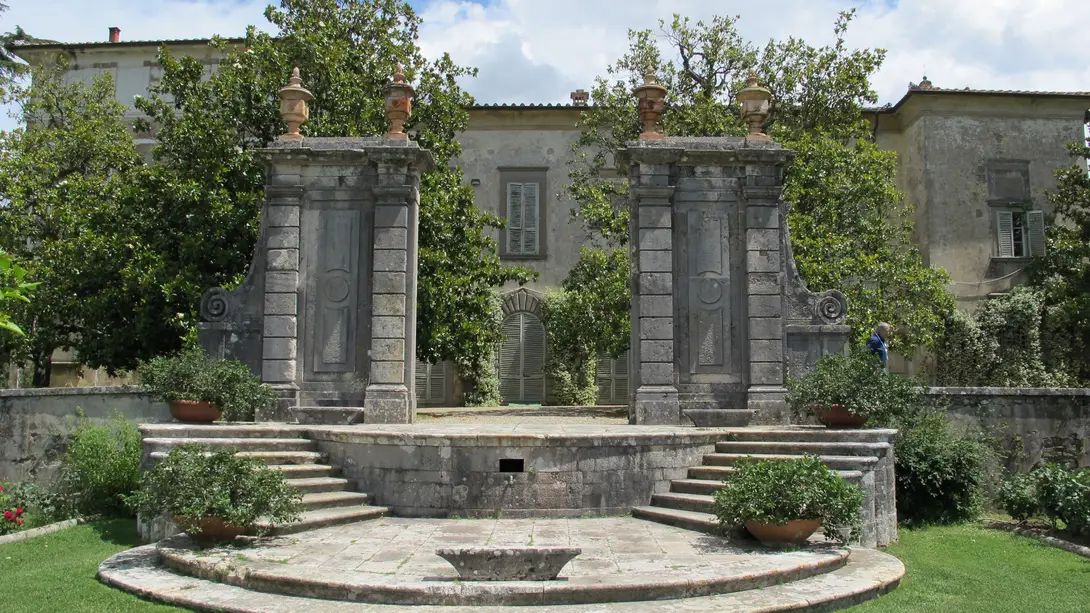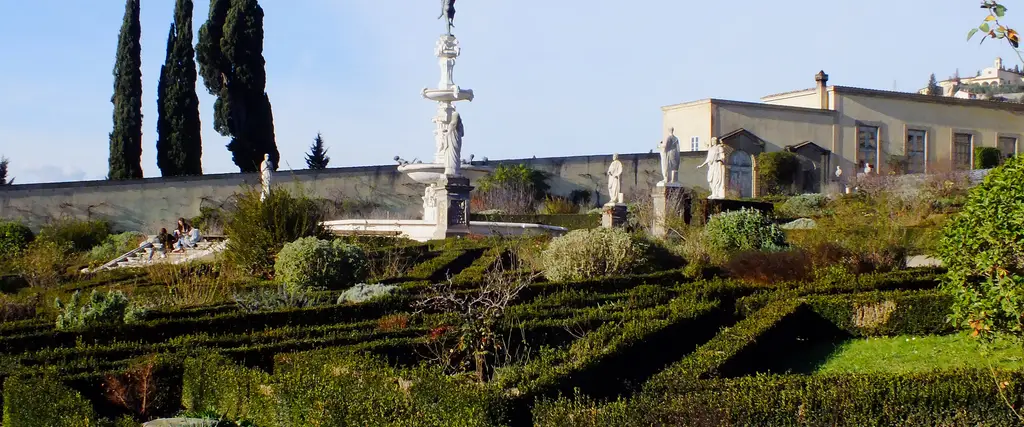
Medici Villas and Gardens
UNESCO World Heritage
In 2013, Tuscan Medici Villas and Gardens have been included in the UNESCO World Heritage List, places of priceless value, belonging to humanity as a whole.
The Medici Villas, immersed in the Tuscan landscape, testify the heritage left to us by the powerful Medici family between the fifteenth and seventeenth centuries. During their hegemony, the villas represented not only holiday resorts and resting places during the hunting season; villas, in fact, were a point of reference for the surrounding farms and even more a social status of their dominion over the territory.
Built in perfect harmony with the environment, embellished with splendid gardens, works of art and innovative technological solutions, they represented a new model of manor house inspired by some fundamental principles of Humanism and Renaissance.
It is interesting to point out how many changes underwent over the centuries , in terms of style evolutions: from the first villas, commissioned by Cosimo the Elder, in the Mugello area (Cafaggiolo, Trebbio) – as Medieval fortresses but softened by Michelozzo’s intervention – or those commissioned by Lorenzo il Magnifico (Poggio a Caiano, Fiesole) of humanistic inspiration to the lasts (Castello, Petraia, Boboli) enriched by the famous Italian-style gardens on a project by Niccolò Tribolo for Cosimo I.
The unmistakable style of the great Master Buontalenti is reflected on the villas of Cerreto Guidi and Pratolino, commissioned by Francesco I. Other architectural examples in which Medici villas developed their style are the villa "of the hundred fireplaces" of Artimino, commissioned by Ferdinando I, and the intervention works carried out on the villa of Poggio Imperiale – the last in chronological order - commissioned first by the Grand Duchesses Maria Maddalena of Austria and then by Vittoria della Rovere (the wives of Cosimo II and Ferdinand II respectively).
In and around Florence
Boboli gardens, located in the center of Florence (in the Palazzo Pitti complex), is considered a open-air museum featuring a set of statues, caves and monumental fountains. Three other beautiful villas are always located in the municipal territory: Petraia and Castello (visitable) and Careggi (momentarily closed).
Out of the city, the municipality of Vaglia houses the fabulous Parco Mediceo di Pratolino, whose villa (now lost) was commissioned by Francesco I dei Medici. The park is usually open to the public from April to October.
Other villas, the oldest ones, are in the Mugello district, the Medici’s origin place: Trebbio (closed to the public) and Cafaggiolo (temporarily closed). Since the mid-16th century, during the Medici Grand Duchy, many other villas were built, such as the one at Cerreto Guidi in the Empolese area, regularly open, Villa Medici in Fiesole and the neoclassical Villa di Poggio Imperiale in Florence (both can be visited only occasionally).
In Tuscany
The Medici Palace of Seravezza, in the province of Lucca, contrasts the typical Medici pageantry with simplicity. Today it is owned by the municipality (regularly visitable).
A few kilometers from Prato: the Medici Villa of Poggio a Caiano, a key example of architecture commissioned by Lorenzo the Magnificent, in this case to Giuliano da Sangallo (regularly visitable); the Villa of Artimino, commissioned by Grand Duke Ferdinando I De' Medici (which can only be visited on booking). Last but not least, Villa la Magia in Quarrata (regularly visitable).
For further information about UNESCO Medici Villas and gardens - not only in the surroundings of Florence, but also in the rest of Tuscany – please visit the official page.
Comune di Firenze
The places
Stages
Boboli Gardens
The Medici family was the first to take care of the Boboli garden’s arrangement, creating the model of the Italian-style garden, then an example for many European courts, in which a rational order is given to the vegetation and the geometries of the avenues and plants are embellished with grottoes, statues and fountains.
Opened to the public in 1766, it is a real open-air museum: valuable are the Roman statues and those of Renaissance sculptors such as Baccio Bandinelli and Giambologna; the amphitheatre, where court performances took place; the Grotta del Buontalenti, where Michelangelo's Prisons were placed (now replaced by copies).
Medici Villa of Petraia
Villa della Petraia is situated a few kilometres from the city centre; the ancient fortified building, of which the large tower still remains today, was enlarged towards the end of the 16th century and turned into a grand-ducal residence. A terraced garden was laid out on the surrounding land.
The courtyard is decorated with late 16th- and early 17th-century frescoes, and was covered over in the 19th century. King Vittorio Emanuele II lived here when Florence was the capital of Italy, and the current furnishings date largely to that period.
Garden of the Medici Villa of Castello
The Villa Medici at Castello is one of the oldest suburban residences of the Medici family, who came into possession of it in 1477. In 1538 Cosimo I commissioned the sculptor and architect Niccolò Tribolo to lay out a large new garden designed to celebrate the power of the prince through the symbology of its statues, fountains and grottos. Only the garden, which has a wealth of citrus trees and rare plants and is dotted with ancient and Renaissance sculptures, is currently open to the public. There is also a fascinating ‘Grotto of Animals’, once enlivened with dazzling water tricks.
Villa Medici in Fiesole
Villa Medici in Fiesole, dates back to the period between 1451 and 1457, built for Giovanni, son of Cosimo Il Vecchio. The project was formerly attributed to Leon Battista Alberti, flanked by Bernardo Rossellino and Antonio Manetti.
In a splendid position over the city, this villa is the first example of a country residence that does not take the form of a fortress or castle, but rather inaugurates the idea of Renaissance villas style.
Moreover, it was here that the cultivation of citrus fruits, coming from the south, began; citrus plants are a characteristic of all Medici gardens
Villa del Poggio Imperiale
This villa was bought by the Medici family in the XVI Century and was later transformed during the Baroque period. It became residence of the grand dukes after the Pitti Palace.
Pratolino Medici Park
On the road connecting Florence with Bologna is a beautiful park that is also a Unesco heritage site: the Parco Mediceo di Pratolino
In the second half of the 16th century, Francesco I de’ Medici commissioned Bernardo Buontalenti to build a villa (later demolished) and a surrounding park; the latter attracted great interest at the time because of the unusual artificial grottoes, water tricks and statues, and was immediately described as “the garden of marvels”.
After Francesco’s death the park had a chequered history until it was bought by the Russian prince Paul Demidoff in the 19th century. He restored the remaining Renaissance elements, including Giambologna’s colossal Apennines statue overlooking a small lake. Inside the statue there used to be grottoes with decorative features, frescoes and water tricks. The decorations have been lost, as have those in Cupid’s Grotto, although there are still a few sculptures, pondsand grottoes dotted around the park. The only building that has survived to the present day without major modification is the chapel, built by Buontalentiin 1580.
This park is the ideal place for a day out with your children: you can have a picnic on the large lawns, walk or have fun at the playground and also walk your dog.
The park can be reached by bus 25A or 307A, direction Pratolino.
Villa del Trebbio
The Villa del Trebbio was acquired in the 14th century in the early days of the rise in the Medici's fortunes. It was built on the ruins of a Lombard tower. Restored by Michelozzo, its architecture retains medieval motifs with a large square tower closely associated with a tall residential building punctuated with regualr window openings on its first floor.
The internal courtyard has a glazed loggia with slender pillars and an exterior staircase. The main building is crowned with an exterior walkaway in medieval style. Located on the top of a hill, it dominates the Mugello plain.
Villa di Cafaggiolo
The Villa di Cafaggiolo is anancient Medici family property acquired in the 14th century. It is located in the Mugello area, on the road to Bologna.
It was originally a medieval farm. In 1451 Cosimo the Elder asked the architect Michelozzo to refurbish it and make it grander while also transforming it into a summer residence with a garden for leisure and rest.
The ancestral home of the Medici, it retains the overall aspect of a medieval building with different sized square towers and machiolated battlements. In plan, it is a square-shaped complex, determined by the assemblage of medieval buildings and additional buildings around two asymmetrical courtyards. It is the prototype of the early fortified Medici Villa. This is the typical transitional solution between medieval and Renaissance architecture and the first appearance of the domus rustica.
At the moment undergoing restoration.
Villa Medicea di Cerreto Guidi
The Medici Villa of Cerreto Guidi is situated near the marshes of Fucecchio, which is rich in wildlife and was built by Cosimo Ide Medici as a hunting lodge. Work started in 1556 and the design with its two large bricks staircases - the so-called Ponti Medicei - is attributed to Buontalenti.
The villa contains furniture and portraits of medici notables from the 16th and 17th centuries and a series of 17th-century tapesties woven in the grand-ducal workshops. The Villa hosts the Historical Hunting and Territorial Museum, which partly occupies the rooms on the upper floor and is mainly dedicated to hunting and shooting weapons and anything related to them, during the period between the Middle Ages and the Modern Age.
Palazzo Mediceo di Seravezza
David Fortini and Bartolomeo Ammannati directed the construction of the Palazzo di Seravezza, commissioned by Cosimo I de' Medici to oversee the nearby excavation of white marble and metals. in the following years the Palace began to host famous Princes including Ferdinando I and his wife Cristina di Lorena, to whom the commission of some works is attributable such as the external chapel designed by Buontalenti.
Medici Villa of Poggio a Caiano
The villa, declared a UNESCO World Heritage Site in 2013, was designed by Giuliano da Sangallo for Lorenzo il Magnifico and is an example of Renaissance architecture that combines classical elements with those of rural Tuscan architecture. The lesson of Leon Battista Alberti is obvious, both in the choice of the villa's location and in the search for symmetry and harmony in its proportions. Cosimo I entrusted Tribolo and Davide Fortini with the construction of the garden.
Medici Villa di Artimino
Built in the XVI century by Bernardo Buontalenti for the grand duke Ferdinando de' Medici. It became the summer residence of the Medici family and was decorated with frescoes by Passignano and Bernardino Poccetti.
The famous lunette with the Medici Villas were painted by Iustus van Utens. In the ancient kitchen you can still admire the rotisserie designed by Leonardo da Vinci.
Villa La Magia
The superb residence, one of the symbols of the Renaissance culture, has reached us through many events and today it presents the stratifications, the signs and the memories of its transformations.
One of the most important owners of this villa was Grand Duke Francesco I de Medici. He ordered the renovation works for the Villa to the court architect Bernardo Buontalenti and in 1585 he ordered the construction of an artificial lake.
In 1645 Ferdinando II sold the property of La Magia to Pandolfo Attavanti, then, in 1752, the estate passed from that family to the Ricasoli family as an inheritance. In 1766 Giulio Giuseppe Amati bought the Villa and all its outbuildings. When in 1863 the Amati family died out, the assets went to the Counts Amati Cellesi. Since 2000 Villa la Magia is property of Quarrata Town Council.
